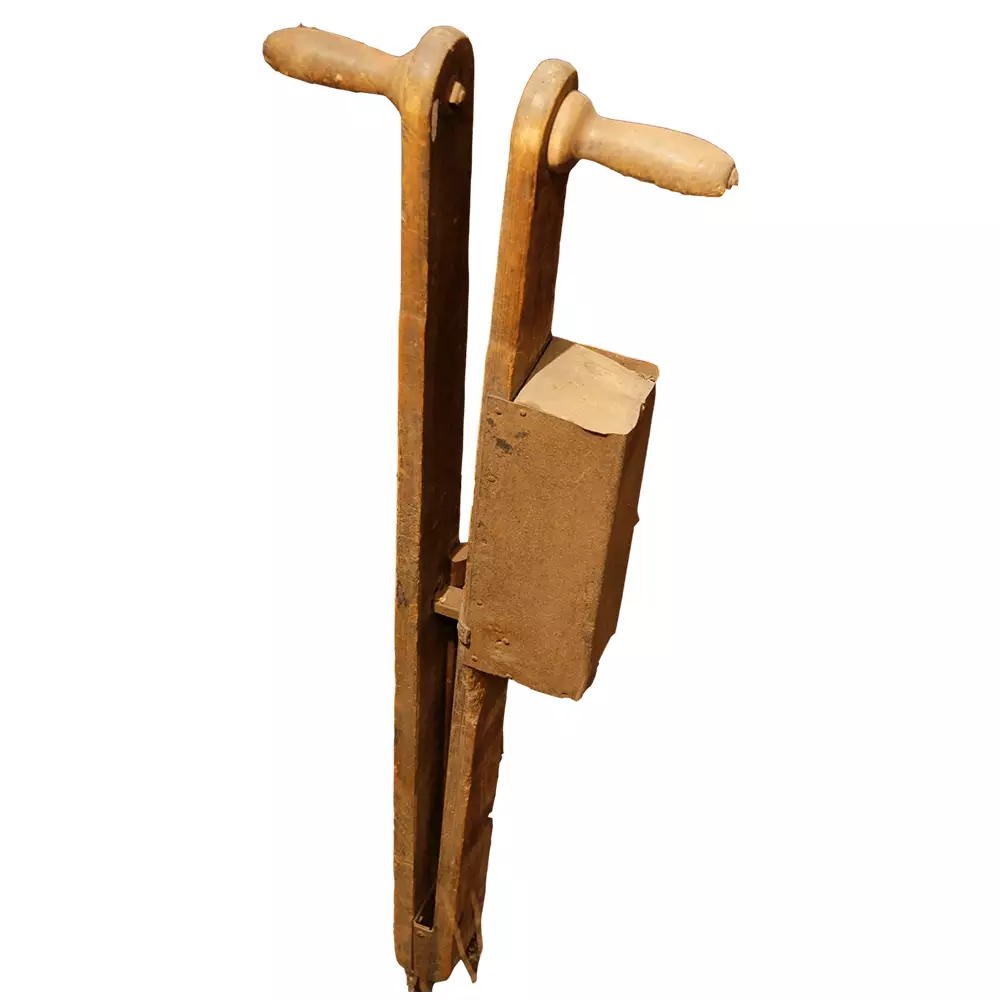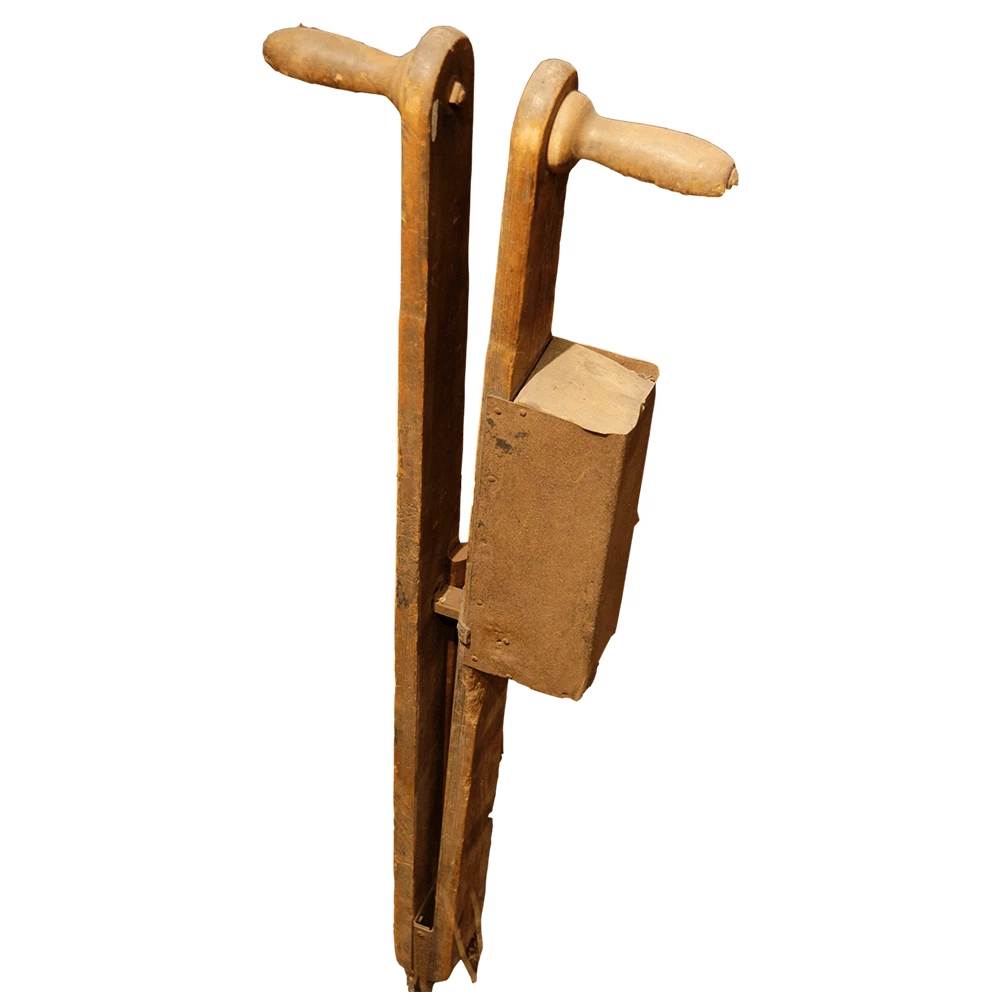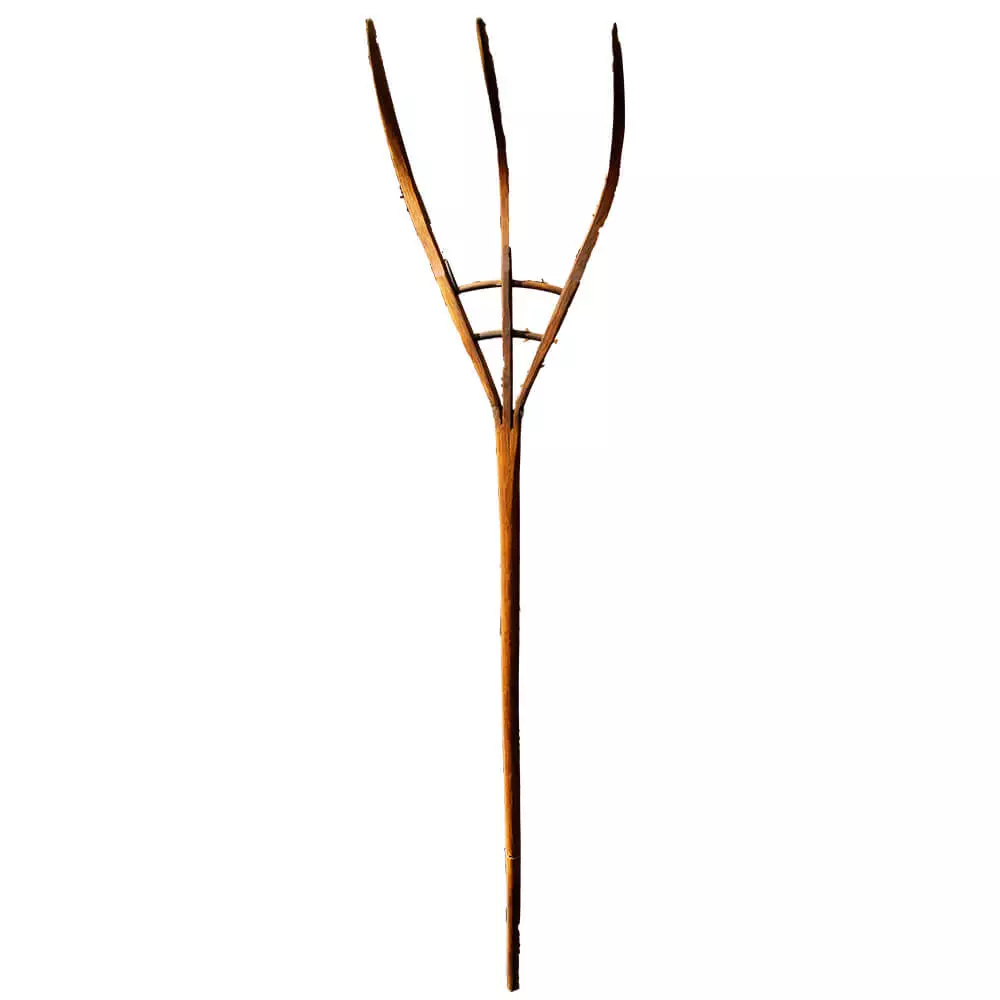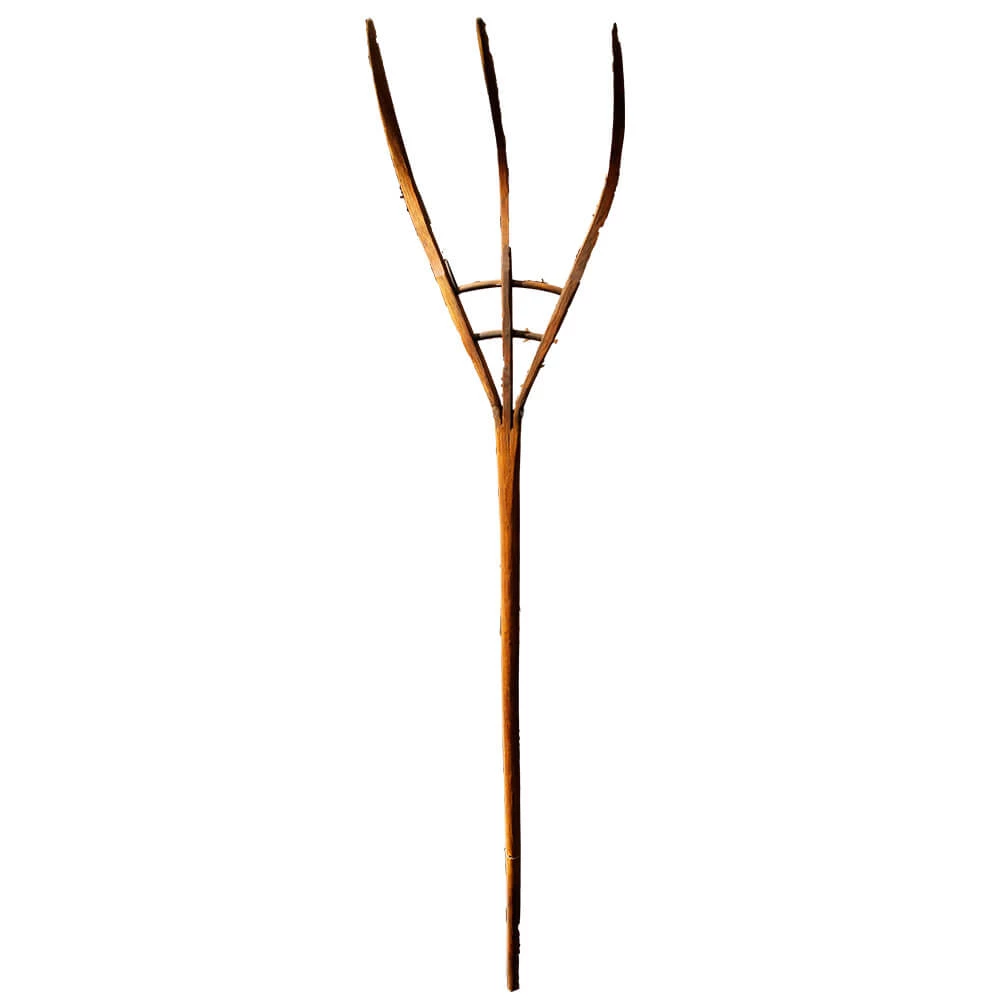Search
Looking for something in particular? Search for it here.
Looking for something in particular? Search for it here.
Prior to the arrival of the railroad, McLean County farmers had few equipment options. Most were hand tools.
Hand corn planter, circa 1870

McLean County farmer William W. Fowler made his own hand corn planter based on one of the many developed after 1850.
The device eliminated the need to bend over, and conveniently dispensed one or more seeds into the soil. Fowler passed it onto his grandson William H. Brown, who used it for many years on his Heyworth farm.
Donated by: Walter Brown
795.243

Wooden hay fork, circa 1850

View this object in Matterport
Cut, raked, and dried in the field, hay was then gathered up with a pitch fork and stored in mounds in the field, or moved by wagon to the barn loft until needed. This crop supplemented pasture and other grain fed to work animals and livestock.
Donated by: Grover Katthoeffer
725.34

Set in their ways or unable to afford mechanical cutting and binding equipment, some farmers continued to use hand tools well into the 1930s.
Frontier farmers put their entire family to work, as hand-harvesting grain crops was labor intensive.
According to Simon Moon, who farmed the John Gregory farms south of Gridley and west of Lexington, it took about 15 hours to pick and husk an acre of corn. If Moon had 120 acres of corn, how long would it take him to pick and husk his corn?
The availability of new tools increased dramatically after the railroad arrived. With raw materials also arriving by rail, local entrepreneurs began manufacturing equipment. By the end of the 19th century most farm tools had been mechanized.
In 1855 a new riding corn planter arrived from Galesburg.
Pulled behind a horse, Brown’s Corn Planter had a seat for the farmer who drove the team of horses, and a seat for a second rider who triggered the release of the corn seed into the ground.
Forty inches was the typical distance between the seed hills and each row. This distance allowed room for the horse and meant that the growing corn could be cross cultivated in several directions without being damaged.
add cost
By the 1870s check-row attachments had been developed for two-row corn planters. The devices were designed to drop corn seed at equal distances in checkerboard fashion. This allowed for cross cultivation.
McLean County farmers worked hard to keep weeds under control. Riding cultivators made the job easier, but farmers still had to walk through their fields to hand hoe weeds missed by the cultivator.
In the 1850s and 60s C.W. Holder & Company was a primary supplier to McLean County farmers. This Bloomington business sold both new innovations and standard equipment brought in by rail.
New and improved binders and mowers for cutting hay and small grains soon arrived via the railroad. Though expensive, they reduced the amount of time it took to complete these tasks and saved the farmer both the time and money he would have spent for hand labor.
Innovative horse drawn (or pushed) corn cutters with binders dramatically reduced the human labor needed to complete these tasks.
Former Hudson farmer turned equipment salesman, C. H. Salzman, demonstrated the Osborne horse drawn corn cutting and binding machine at the Hudson farm of M. Troyer in 1889.
The cost to hire someone to cut and shock corn has reached seven cents per shock, making it very expensive feed for the ordinary stockman or farmer. More cattle can now profitably be kept than before the invention and perfection of this machine.
C.H. Salzman
Bloomington Pantagraph, August 24, 1889
In 1888 L.L. Crawford purchased a “Big Injun” sulky plow from Bloomington’s Hyde & Martens Company.
He had much to say about the use of this plow:
"I am well pleased with the working of the Big Injun Sulky Plow... Went into a slough that had never been plowed, and with three horses turned it upside down in a splendid shape. Have tried seven different plows that same place, using as high as six horses... Never saw a plow that run so nicely and handled so well."
L.L. Crawford, McLean, Illinois
Bloomington Pantagraph, September 6, 1888
Hand and horse powered threshing equipment reduced the labor needed to separate grains, such as wheat and oats, from their stalks and husks. But by the late 19th century steam powered engines were used to power threshing machines.
Steam engines, based on the same technology as railroad engines that used wood and coal as fuel, dramatically reduced the labor needed to power threshing machines, like the one pictured here. The engine was parked and the crop was brought from the field to the threshing machine, which was powered with a belt by the engine.
With no electricity on most McLean County farms until the late 1930s, some farmers invested in alternative power sources.
Around 1880 Colfax farmer Thomas Kilgore installed a windmill to power the pump that brought water from a well for his livestock.
In the early 20th century, most McLean County farmers had grinding wheels for sharpening tools and a hand corn sheller for removing corn kernels from the ear.
These were both used on the Louis Giese farm near Shirley and were believed to have been purchased from J. P. Walter’s hardware store in Shirley.
Giese used the sheller to hand shell the corn he fed his livestock.
Visit the Funk Prairie Home and Mineral Museum just off Interstate 55 near Shirley, Illinois.